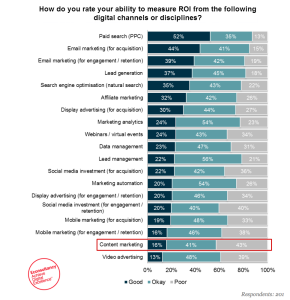A question that often arises with with early stage software and hardware companies is “How should we sell our product? Should our technology sales approach be to sell directly, or should we sell through distributors, dealers or OEM partners?”

The answer, like most topics discussed in this forum, is rarely as simple or straightforward as the question itself. It depends on a lot of different factors. First of all, if direct, does that mean building an expensive direct sales force, or a marketing driven model with direct sales from a website? If indirect through dealers/distributors, does it mean distribution through 11,000 mass retailers at one extreme or a select few, highly specialized, technical Systems Integrators on the other? There are so many different options within the direct vs. indirect argument itself. I will tell you upfront that I have a strong bias toward using multiple channels—both direct and indirect—if at all possible. It’s always been my opinion that this is usually the best way of achieving the highest total return on the high product development investments that are typical in the technology industry. But that’s a general rule and one that won’t always hold up in individual cases. Let’s take a look at some of the things a company should consider in formulating a direct vs. indirect sales and marketing strategy.
How Complex is the Product?
It’s always important to take an inventory of the details of the product when considering any aspect of your sales and marketing strategy. Is the product complex to sell? Is it complex to install? If a typical installation is highly complex and customized for the client, there may be a high level of services required that can only be delivered by specialized experts within the company. If this is the case, a direct model usually works best. If there is what I would term a “medium” level of complexity to the product, this often lends itself to the utilization of VAR and System Integration partners. This class of partners is attracted to products that allow them to bill high value configuration, customization and service hours, which is really how they make their money. As a result they are motivated to sell this type of product (to the extend that VARs really will “sell” a product at all–a much longer discussion). The key here is that the product isn’t so complex that the partners can’t be reasonably trained on the product to enable the delivery of these services somewhat independently in the field, with a minimum level of hand-holding by the vendor after an initial training period.
The last case is a product which is very simple or has a minimum level of customization that can be performed by the end user themselves. This level of product complexity usually lends itself to multiple, broad distribution channels, including direct and mass market channels which provide great distribution breadth, but require minimal support. VARs and Integrators may also sell products of this nature, but they won’t put much focus on them since they don’t drive service revenue. VARs will essentially “take orders” for this type of product as a convenience to their clients. They won’t be a “strategic” channel for this type of product, but since it is a large channel, VAR channel sales can still add up to a substantial total cumulatively—so you shouldn’t ignore VARs if they are appropriate for your product.
How High is the Product Price?
A high price can lead you in two different directions: Direct-only, or to a VAR/Systems Integration distribution strategy. If you’re selling an Enterprise Software Product into a narrow niche with an average deal size of $ 2M, you’re probably going to end up selling the product directly. If, however, you are selling a $ 5K-100K average sized deal, and the addressable market is a bit larger and more well-defined, it’s very possible that the VAR/Integrator channel may provide real leverage. For products that fit into the $ 9.95-$ 5k range, a multi-channel marketing and distribution model may once again be your best bet. Products in this price range usually are very standard or have user-customizable features and lend themselves to “marketing/sales-intensive” distribution channels, rather than support/customization intensive channels. This might mean a focused direct marketing approach with a SaaS-based model, or direct downloaded software sales from a website, possibly intensive inbound/outbound telesales, or even in some cases sales through computer retailers or mass market stores.
What does the promotion mix look like?
High priced, directly distributed products tend to have very simple promotion plans. The reason for this is that high priced products typically have small focused markets, so it’s pretty simple to get your marketing message to the customer. The simplest promotion strategy is what I call “Door to Door marketing.” Door to Door marketing means relying on the sales force almost exclusively to promote your product—with little or no investment in traditional marketing programs. Maybe due to limited resources, your promotional budget only allows a monthly Ad in a highly targeted trade journal, or a modest amount of PPC advertising. Door-to-Door marketing isn’t a strategy that I generally recommend, but for narrow markets, it is sometime appropriate. Bottom line, simple promotional strategies are generally only advisable for direct distribution approaches and technology sales in small, niche markets.
If on the other hand, you have available to you a large budget and a wide variety of promising promotional programs, that often is successfully coupled with a broad distribution strategy. If you’re promoting in many different places, that may drive demand in a variety of different channels. In general, I recommend using everything available to you in this case. I’m also rarely a proponent of selling “indirect only”— in this case you tend to lose valuable information without a strong direct link to the customer. You will also leave money on the table by giving up margin on customers that would prefer to buy direct. But occasionally companies are so dependent upon channels that it doesn’t make sense to manage the channel conflict and spend a lot of time trying to deflect the ill will that selling direct can generates within a channel.
What technology sales channels are available to you?
Oftentimes, the decision on how to sell and distribute is made for you. If your company is in a missionary situation where you are creating a new market, or you are in a very narrow niche, you usually don’t have much choice but to sell direct. If it’s a new market segment, technology sales channels might develop later. But in most cases selling direct when you’re first getting started, either solely or in conjunction with channels, is highly advisable. Keep in mind that there is no channel in the world that will be able to figure out how to sell a product that the vendor hasn’t figure out how to sell itself.
It’s always good to continuously conduct trial and error marketing/sales campaigns directly–particularly when you’re first starting out– and then transfer that knowledge gained to your channels. If you have a product that is broadly attractive to a variety of channels and you have the resources to promote and sell effectively through all of them, I say go for it. As I stated early on in this article, it’s my belief that this is the best way to optimize your return on assets. The only caution is to make certain that you have the necessary resources for this approach and are in a position to support all channels. If not, it’s better to “go slow” and add channels one at time. If you alienate a channel, they have a very long memory and it will be hard (if not impossible) to get back in their good graces.
One type of technology sales partner we haven’t discussed yet is the OEM manufacturer or developer. In some cases, there may be a large, dominant player in your business that you are tempted to pursue as a channel partner. While occasionally this leads to making the principals of a small company quite rich, I’ve found in many cases it ends up being fools gold. No one sells your product like you do. The OEM deals that I see often end up with revenue levels in the range of 5-10% of the small company’s initial forecast expectations. This can still be a substantial, important source of revenue. But it becomes a problem if you were building our budget on 100% of the OEM sales forecast. The message I’ll leave you with is that because of this I prefer early OEM deals to be non-exclusive, rather than exclusive. The exception is for a product that fits in a different market segment that the OEM addresses, which you don’t plan to participate in directly. But too many times I’ve seen clients “bet the farm” on one major OEM early in their development and the company was either killed or severely wounded by the experience. Pursue OEMs if you like, but it is usually best to do so as part of an overall, comprehensive distribution strategy.
Location of target market
Often it makes sense to develop your distribution strategy geographically. For example, you’re developed a well-known brand in your home market by selling directly, but haven’t ventured internationally yet. Because you’ve developed your business in your home market selling directly, you might be inclined to continue this strategy internationally. But this can be very capital-intensive and slow, if your situation will require “putting boots on the ground” in each international market. In this case you might benefit greatly by partnering internationally with a network of focused distribution partners in each country. By doing this you’ll be able to leverage the brand and existing customer base of of each partner in their respective region. This is the type of hybrid technology sales and distribution strategy is the result of evaluating what makes the most sense for your particular situation–rather than simply doing what’s familiar and comfortable.
How does the customer want to buy?
Finally, maybe the most important question to consider is “how and where does the customer want to buy?” One of my most closely held beliefs is that you maximize revenue by offering the customer a product that is priced in the way they prefer, packaged the way they like and sold via the channel he/she is most comfortable with. So if your prime prospect is a direct buyer, sell direct. If it’s a diverse audience that has a number of preferences on where to buy, strive to participate in all of those channels. This may be the most important advice that I can provide on technology sales and distribution.
That’s my review of the Direct vs. Indirect Technology Sales & Marketing decision. I’m sure there are a lot of different experiences out there on this topic—what’s your experience been? Post a comment or contact me directly using the info below. I’d love to hear your thoughts.
The post Direct vs. Indirect Technology Product Sales appeared first on the Morettini on Management Blog.
If you liked this post please share it with you colleagues using the “share” buttons or leave a comment below.
Business & Finance Articles on Business 2 Community(130)


